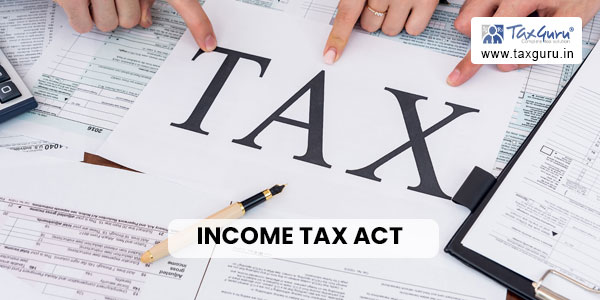A Comprehensive Guide to Form 35 CIT Appeal: Understanding the Process and Its Importance
Introduction:
Form 35 CIT Appeal is a crucial aspect of the taxation system that allows taxpayers to challenge decisions made by the Commissioner of Income Tax (CIT). It provides a structured mechanism for taxpayers to present their case and seek a review of any adverse ruling or assessment made by the tax authorities. In this article, we will delve into the details of Form 35 CIT Appeal, exploring its significance, the process involved, and key considerations for taxpayers.
Page Contents
1. Understanding Form 35 CIT Appeal:
Form 35 CIT Appeal is a legal document filed by taxpayers to initiate an appeal against an order or decision issued by the CIT. It serves as a formal channel through which taxpayers can challenge unfavorable assessments, demand orders, penalties, or any other decision made under the provisions of the Income Tax Act.
2. Importance of Form 35 CIT Appeal:
The filing of Form 35 CIT Appeal holds significant importance for taxpayers due to several reasons:
a. Review of unfavorable decisions: It provides an opportunity for taxpayers to seek a review of any adverse decision made by the CIT, ensuring fairness and justice in the tax assessment process.
b. Protection of taxpayer rights: Form 35 CIT Appeal acts as a safeguard to protect the rights of taxpayers and provides a platform for them to present their case and arguments.
c. Correction of errors: In cases where errors or mistakes have been made in the initial assessment, Form 35 CIT Appeal allows taxpayers to rectify those errors and present accurate financial information.
d. Legal recourse: Filing an appeal through Form 35 CIT Appeal is an essential step for taxpayers who wish to pursue legal remedies and challenge unfavorable decisions in a structured and lawful manner.
3. Process of Filing Form 35 CIT Appeal:
The process of filing Form 35 CIT Appeal involves the following key steps:
a. Form and documentation: Taxpayers are required to fill out Form 35 CIT Appeal, providing all the necessary details such as the assessment year, PAN (Permanent Account Number), order details, grounds for appeal, and the relief sought. Supporting documents, such as copies of the assessment order and relevant financial statements, should be attached.
b. Jurisdictional CIT(A): The filled form and supporting documents must be submitted to the appropriate jurisdictional office of the Commissioner of Income Tax (Appeals) [CIT(A)] within the stipulated time frame, usually 30 days from the date of receipt of the order.
c. Hearing and submissions: Once the appeal is filed, the CIT(A) will allocate a date for a hearing. During the hearing, the appellant has the opportunity to present their case, provide arguments, and submit additional evidence or documents supporting their claim.
d. Decision and further recourse: After considering the appellant’s submissions, the CIT(A) will pass a decision either upholding the original order, modifying it, or overturning it entirely. If the appellant is dissatisfied with the CIT(A)’s decision, further recourse can be pursued by filing an appeal before the Income Tax Appellate Tribunal (ITAT) or higher courts, if applicable.

4. Key Considerations for Taxpayers:
a. Timelines: It is crucial for taxpayers to adhere to the prescribed timelines for filing Form 35 CIT Appeal. Delaying the filing may result in the rejection of the appeal or the imposition of penalties.
b. Grounds for appeal: Taxpayers should carefully consider and clearly state the grounds on which they are appealing. These grounds should be supported by relevant facts, evidence, and legal provisions.
c. Professional assistance: Engaging the services of a tax professional or legal expert can greatly assist taxpayers in preparing and presenting a strong appeal. They can provide valuable guidance on the legal aspects.
d. Documentation and evidence: It is essential for taxpayers to gather and organize all relevant documentation and evidence to support their appeal. This may include financial statements, transaction records, correspondence with the tax authorities, and any other relevant documents that strengthen their case.
e. Preparing arguments: Taxpayers should carefully analyze the grounds for appeal and develop well-reasoned arguments to present before the CIT(A). This may involve understanding the applicable tax laws, legal precedents, and interpretations that support their position.
f. Compliance with appellate procedures: Taxpayers should familiarize themselves with the procedural requirements of the appellate process. This includes adhering to the prescribed format for filing Form 35 CIT Appeal, providing accurate and complete information, and following any additional guidelines specified by the CIT(A).
g. Maintaining records and communication: It is advisable for taxpayers to maintain a record of all communications, submissions, and decisions related to the appeal process. This can serve as a reference and provide a clear timeline of events in case of any future disputes or legal proceedings.
h. Consider settlement options: During the appeal process, taxpayers may have the opportunity to explore settlement options with the tax authorities. This could involve negotiations for a mutually agreeable resolution, such as a revised assessment or penalty reduction. Considering settlement options can potentially save time, effort, and costs associated with lengthy legal proceedings.
Conclusion:
Form 35 CIT Appeal is a crucial tool for taxpayers to challenge unfavorable decisions made by the Commissioner of Income Tax. By understanding the process and requirements of filing Form 35 CIT Appeal, taxpayers can effectively exercise their right to seek a review and remedy in cases where they believe the tax assessment is incorrect or unjust. Engaging professional assistance, preparing strong arguments, and providing supporting documentation are essential steps in building a compelling case. Timely compliance with procedural requirements and maintaining clear records throughout the process are also vital. By utilizing the provisions of Form 35 CIT Appeal, taxpayers can ensure fairness, transparency, and the protection of their rights within the taxation system.





I think the author himself is confused about form 35 such articles should be published after verification of matter. Form 35 is used only for appeal before CIT(Appeal)
form 35 is got appeal before cit appeal. form 36 is for itat .